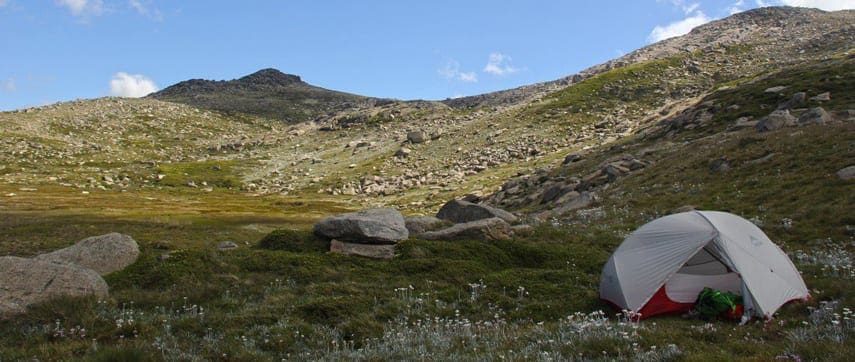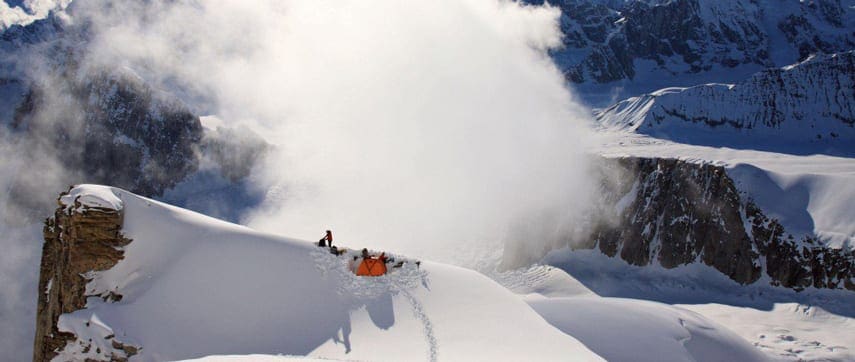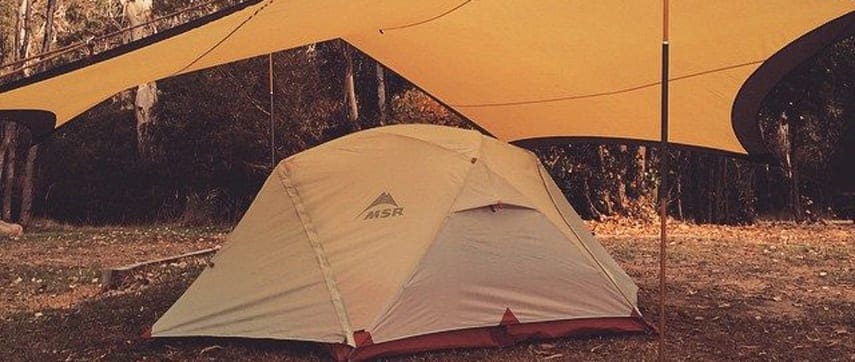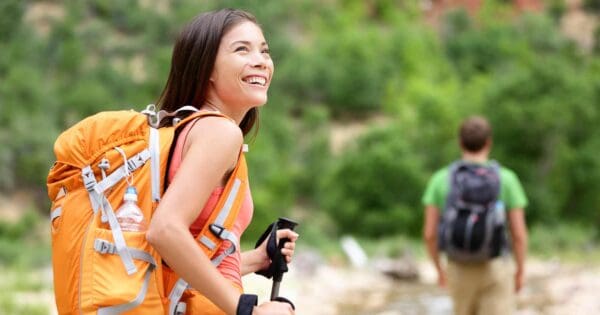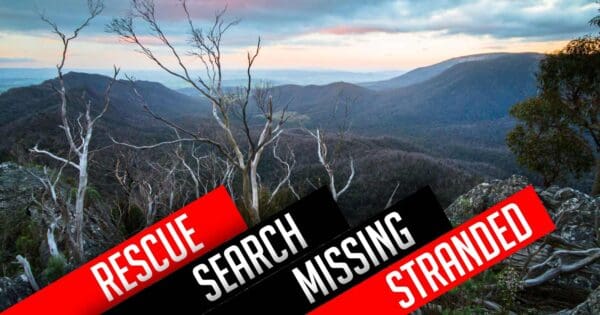Established camp grounds or caravan parks are great for offering the creature comforts like electrical power, running water, bathrooms, and a designated space for tents, tables, and fires, but when you’re sick of the noise, the people, or the confinements of these areas, it’s time to head out on your own adventure. If your planning on heading out into the wilderness, be sure to read these tips on choosing a campsite, your home away from home.
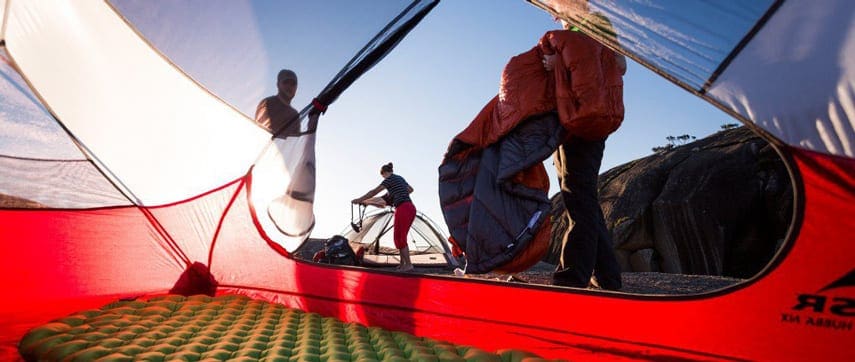
Ground surface
Where you choose to sleep will arguably be the most important decision when picking your camp site. Finding a spot with flat ground to pitch your tent is critical. If not you may find yourself waking up in the middle of the night crammed against the tent wall and entirely off your sleeping mat which I guarantee is not the most fun way to wake up for you or your tent buddy. If a perfectly flat spot is unavailable look to position the tent so your feet are on the downward slope.
Making sure that your flat ground is even is also important. Even ground with no lumps or hollows will help you get a good nights sleep so you can wake up fresh as a daisy the next morning. In a perfect world flat areas could be covered in grass or sand.
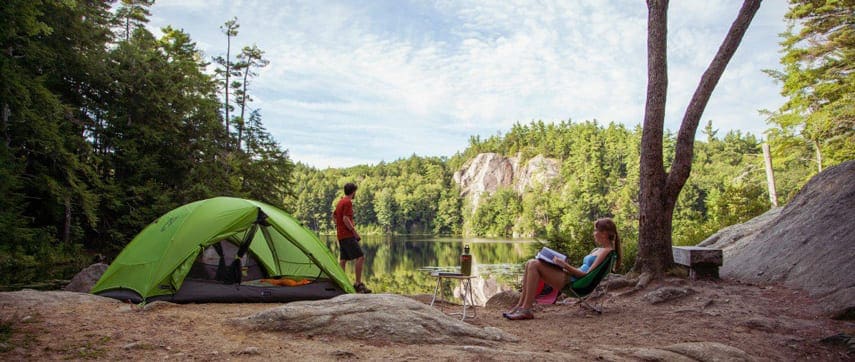
Shade
After flat ground for pitching a tent, shade would be the second most important factor when choosing a camp site. Having permanent shade throughout the day isn’t necessarily. But shade in the morning is a real bonus. Being awoken before 7 a.m. by a scorching hot in your tent is, fairly unpleasant. Try and choose a spot where you can get a bit of morning shade and it will make for a nicer wake up after a hard days hiking.
Look above you
Always look above you, when picking a camp site for the sake of your own safety. You should never pick a tent site beneath a dead tree branch. Same goes for rockslide and avalanche paths, as well as pitching a tent beneath a loose rock ledge.
What’s around you
Not only is it important to think about what’s above you, it’s also a good idea to look at what’s around you. You may not want to be camped right on the water’s edge due to bugs in summer or flooding risk if there is heavy rain up stream. However it does help to be relatively close to a water source so you’re not lugging water to far back to your camp site.
If your expecting high winds, consider setting your tent behind a windbreak such as large boulders, bushes or if in the snow build a small wall and dig in. Its not a fun experience to be caught on flat open ground during a heavy winds.
Finally, consider the impacts of your camp. If you find yourself in a spot that looks like its been used already, your overall impact will be less than if you create a brand new spot.
Camp layout
With ground surface, shade, and location organised, it’s now time to discuss the layout of your camping area. If you’re out hiking and pitching a single tent, there’s not much need for a lot of space. However, if you’re with a larger party and lots of gear, you’ll need to find yourself a bigger spot. Tent space and cooking space are obviously two of the most important spatial factors.
If grim weather is expected a lightweight tarp that can be used as a shelter for cooking and a more comfortable place to hangout and be social. The tarp can also be used for shade if no trees are present or as a quick shelter in case of emergency.
If there are no set toileting areas make sure you abide by the rules of carrying a trowel and deposit solid human waste in cat holes dug in the topsoil – usually 10-15cm deep and at least 100m from water, camp and tracks. Cover and disguise the hole when finished.
When choosing your own camp site, it’s important to just keep in mind what exactly you’re looking for. The number of people, activities, trail access, nearby water sources and if you combine all of these you will create your perfect camping spot. With all this knowledge in mind now its time to head into the great outdoors and enjoy the cooler camping weather in comfort.
Author: Dave Casey
Photos: Lachlan Gardiner and Dave Casey
Contributed by: Paddy Pallin
